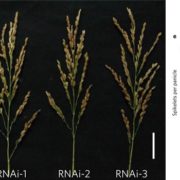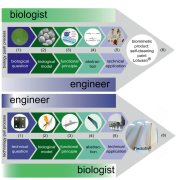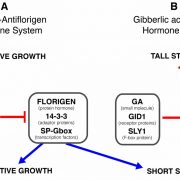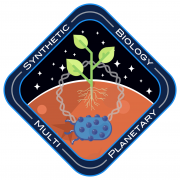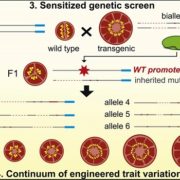A nanobionic light emitting plant ($)
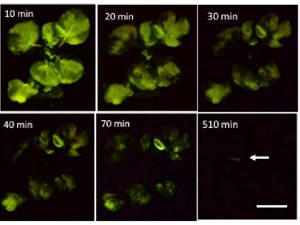 Reading books by the light of nanobionic plants sounds like something out of a scifi book. However, scientists have been working for many years on engineering light-emitting plants based on the luciferase enzyme. This work has been limited largely by the need to overcome the toxicity of adding to much luciferin (the substrate for luciferase), co-localizing the reactive enzymes, and supplying enough ATP to power the chemical reactions. Kwak et al. attempt to tackle these problems utilizing several variants of common plants (spinach, kale, watercress, and arugula). These plants have empirically high ATP production rates, which may help to power these chemical reactions. The authors introduced a mixture of four chemically-interacting nanoparticles, from firefly luciferase conjugates to semiconductor nanocrystal phosphors, to living plants through stomatal pores using a pressurized bath infusion system. By this method, they were able to induce a visible light source in non-transgenic leaves. The nanoparticles are designed with specific size and surface charges in order to target specific compartments (leaf mesophyll cells and guard cells shown here) and also to help combat the toxicity of luciferin. Through addition of chemical activators and inhibitors, the light source can also be turned “on” or “off”. Although this work is still far off from each of us reading by the light of a plant, it is the first time plants have been successfully used as self-powered light sources using only nanotechnological approaches. Nano Letters. (Summary by Alecia Biel) 10.1021/acs.nanolett.7b04369.
Reading books by the light of nanobionic plants sounds like something out of a scifi book. However, scientists have been working for many years on engineering light-emitting plants based on the luciferase enzyme. This work has been limited largely by the need to overcome the toxicity of adding to much luciferin (the substrate for luciferase), co-localizing the reactive enzymes, and supplying enough ATP to power the chemical reactions. Kwak et al. attempt to tackle these problems utilizing several variants of common plants (spinach, kale, watercress, and arugula). These plants have empirically high ATP production rates, which may help to power these chemical reactions. The authors introduced a mixture of four chemically-interacting nanoparticles, from firefly luciferase conjugates to semiconductor nanocrystal phosphors, to living plants through stomatal pores using a pressurized bath infusion system. By this method, they were able to induce a visible light source in non-transgenic leaves. The nanoparticles are designed with specific size and surface charges in order to target specific compartments (leaf mesophyll cells and guard cells shown here) and also to help combat the toxicity of luciferin. Through addition of chemical activators and inhibitors, the light source can also be turned “on” or “off”. Although this work is still far off from each of us reading by the light of a plant, it is the first time plants have been successfully used as self-powered light sources using only nanotechnological approaches. Nano Letters. (Summary by Alecia Biel) 10.1021/acs.nanolett.7b04369.



